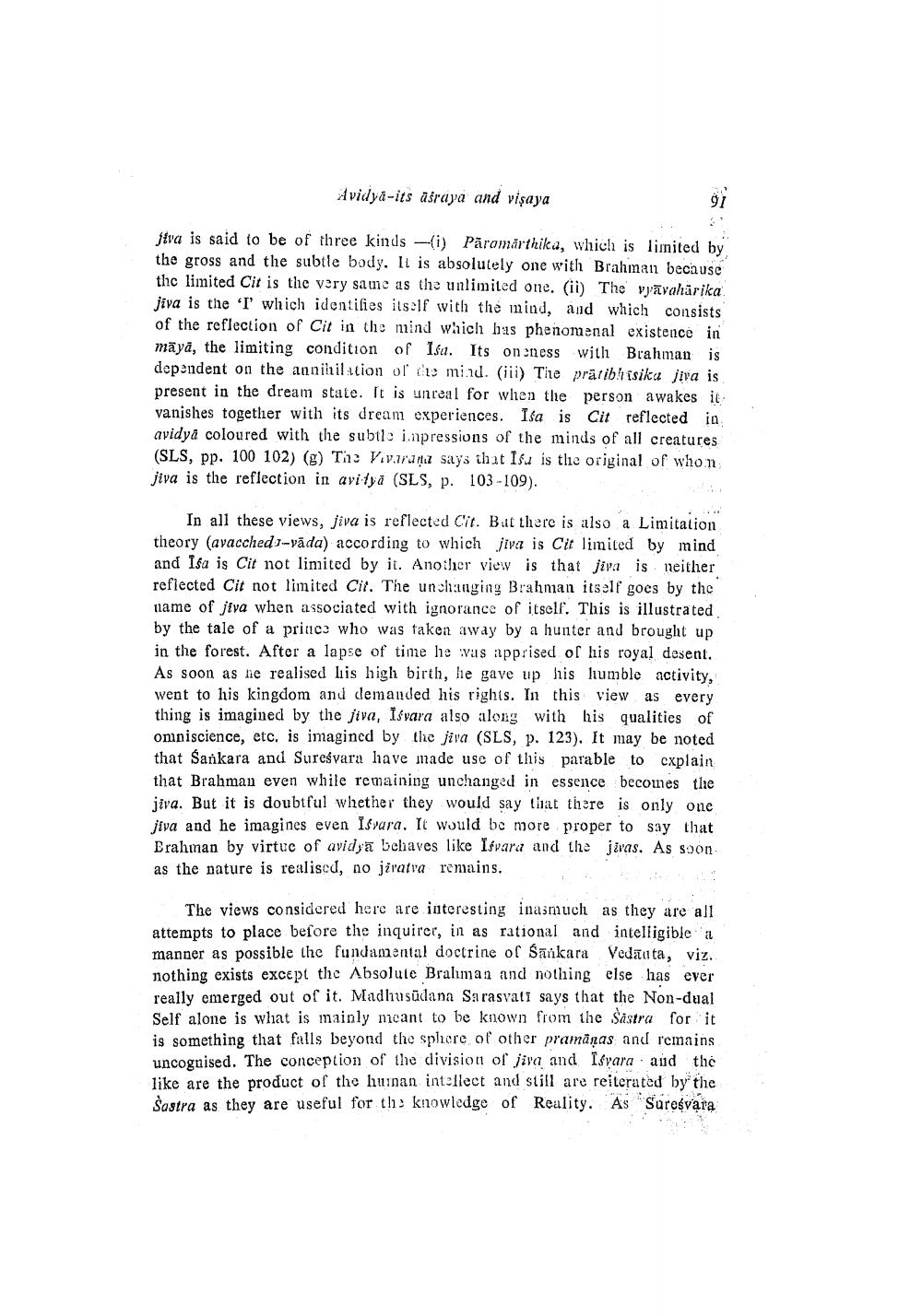________________
Avidya-its asraya and vişaya
jiva is said to be of three kinds -(i) Pāromarthika, which is limited by the gross and the subtle body. It is absolutely one with Brahman because the limited Cit is the very same as the unlimited one. (ii) The vyāvahärika jiva is the 'T' which identifies itself with the mind, and which consists of the reflection of Cit in the mind which has phenomenal existence in māyā, the limiting condition of Isa. Its oneness with Brahman is dependent on the annihil dtion of cle mind. (iii) Tie pratibh isiku jiva is present in the dream state. It is unreal for wlien the person awakes it vanishes togethier with its dream experiences. Isa is Cit reflected in avidya coloured with the subtle impressions of the minds of all creatures (SLS, pp. 100 102) (g) Te Viviran says that Ifu is tlic original of whom jiva is the reflection in avidya (SLS, p. 103-109).
In all these views, jiva is reflected Cit. But there is also a Limitation theory (avacchedu-vāda) according to which jiva is Cit limited by mind and Isa is Cit not limited by it. Another view is that jiva is neither reflected Cit not limited Cir. The unchanging Brahman itself goes by the name of jiva when associated with ignorance of itself. This is illustrated by the tale of a pritco who was taken away by a hunter and brought up in the forest. After a lapse of time he was apprised of his royal desent, As soon as he realised liis high birth, he gave up his lumble activity, went to his kingdom and demanded his rights. In this view as every thing is imagined by the jiva, Isvara also along with his qualities of omniscience, etc. is imagined by the jiva (SLS, p. 123). It may be noted that Sankara and Sureśvara have made use of this parable to cxplain that Brahman even while remaining unchanged in essence becomes the jiva. But it is doubtful whether they would say that there is only one jiva and he imagines even Isvara. It would be more proper to say that Erahman by virtue of avidye behaves like Isvara and the jivas. As soon as the nature is realised, no jiratva remains.
The views considered here are interesting inasmuch as they are all attempts to place before the inquirer, in as rational and intelligible a manner as possible the fundamental doctrine of Sankara Vedatuta, viz. nothing exists except the Absolute Braluman and nothing else has ever really emerged out of it. Madhusudana Sarasvati says that the Non-dual Self alone is what is mainly meant to be known from the Sastra for it is something that falls beyond the sphere of other pramanas and remains uncognised. The conception of the division of jiva and Isyara. and the like are the product of the human intellect and still are reiterated by the Šostra as they are useful for the knowledge of Reality. As Suresvara




